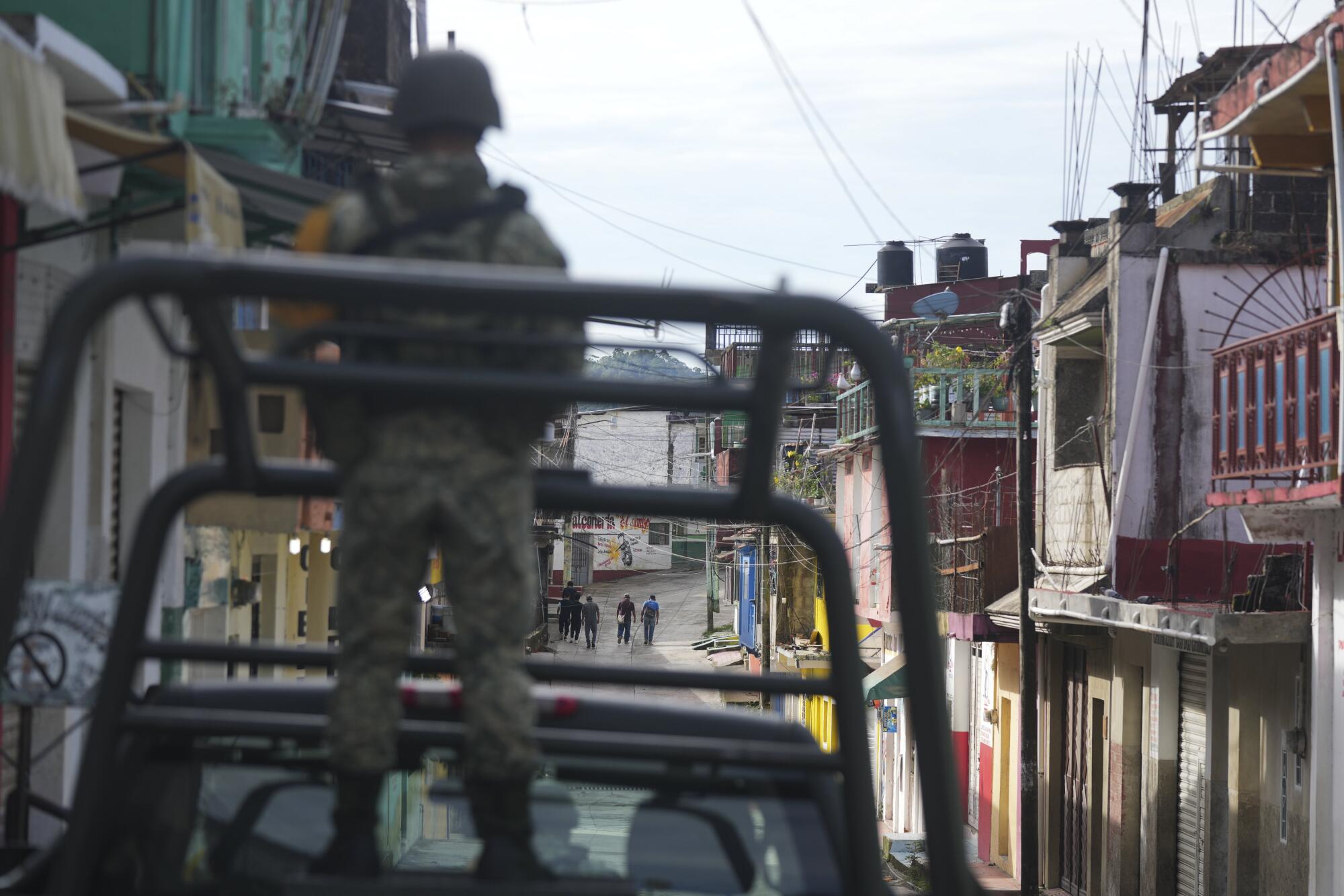When is a hotel more than a place to sleep? When it’s in a building with a storied past, allowing guests to go back in time to the Gilded Age or Edwardian era as easily as they go to the gym or spa.
Nowadays, you can check into a 17th-century former soap factory on the French Riviera, or part of the Old War Office in London, or a Renaissance-palazzo-style building that was once a bank in New York.
Here are five new hotels in historic spaces where you can experience the past and present, delighting in the architecture of vanished days even as you indulge in the latest luxuries.
Chateau de Theoule
Location: Theoule-sur-Mer, France
This seaside respite on the Cote d’Azur was once a 17th-century soap factory yet looks like a castle thanks to a Scottish lord who, in the early 1900s, added turrets and crenelated ramparts. Near the Massif de l’Estérel mountain range, the property opened recently with 44 rooms and suites, some in the castle and others in villas. All have an airy feel, thanks to linen curtains, rattan light fixtures, hardwood floors and views of the Bay of Cannes.
While the building begs to be explored, soft sand and sunshine are the order of the day – and the hotel has its own beach, La Plage Blanche, with 90 sun beds.
Chateau de Théoule is a hotel that used to be a 17th-century soap factory. — Gaelle Le Boulicaut
Chateau de Theoule is about 20 minutes from Cannes, though if you get hungry there’s no need to leave the sand. A beach restaurant and lounge has cocktails – like the Strambery Fields (elderberry-infused gin, vanilla syrup, strawberry purée, tonic and egg white) – and menu items that include salads, pissaladiere (think focaccia with confit onions, anchovies and black olives), and grilled octopus with citrus fennel and chimichurri.
If you can bear to leave your lounge chair, explore the area’s hiking trails, swim in the pool, or visit the hotel spa for a massage or body treatment.
As evening descends, head to Mareluna on the terrace of the castle overlooking the bay for Mediterranean food and wine with dishes like cuttlefish tagliatelle with avocado and smoked herring eggs. The hotel will close for the season in mid-November.
Raffles London At The OWO is a former hub for British military and political leaders. — Raffles London At The OWO
Raffles London At The OWO
Location: London, England
The former workplace of government and military officials, including Winston Churchill, the Old War Office (known as the New War Office when it was built in the early 1900s) has long been a place of intrigue. Fans of James Bond may recognise its Edwardian baroque-style exterior from some of the films, and indeed Ian Fleming, the creator of Bond and a former naval intelligence officer, is said to have visited the building.
It’s now open to the public for the first time, with part of it reborn as the 120-room-and-suite Raffles London At The OWO, the first Raffles Hotels & Resorts property in Britain.
Inside the grand space, some of the offices of political and military leaders have become suites, including one named for Churchill. There are also corner suites that take their names from female spies and other women linked to the property’s history, including Viscountess Astor, the first woman to sit in the House of Commons, and World War II operatives such as Vera May Atkins, a spy who recruited British secret agents.
The hotel’s interior design is by Thierry Despont, the French architect and designer known for his work on the Ritz Paris and the centennial restoration of the Statue Of Liberty. Despont passed away last year.
Strategic planning taking place nowadays involves when to book an appointment at the hotel’s spa, which spans four floors. Historic spaces have new purposes, like a former library that’s been transformed into a restaurant, Saison by Mauro Colagreco, with Mediterranean dishes from the chef, perhaps best known for his Michelin-starred restaurant, Mirazur, in France.
At Mauro Colagreco, another of the chef’s restaurants at the hotel, tasting menus highlight seasonal British fruits and vegetables.
Visit the Drawing Room, a wood-panelled lounge with a Steinway piano, for afternoon tea or something stronger, which you can sip while overlooking the Horse Guards at Buckingham Palace. Or slip off for a drink in rooms formerly used by MI5 at the underground Spy Bar.
Hotel Casa Lucia in Buenos Aires occupies an early-20th-century building commissioned by a shipping businessman. — Hotel Casa Lucia
Hotel Casa Lucia
Location: Buenos Aires, Argentina
Once one of Latin America’s tallest buildings, the Edificio Mihanovich – commissioned in the 1920s by Nicolas Mihanovich, a shipping businessperson – is now home to this new 142-room-and-suite hotel. Inspired by the shape of a lighthouse, the building was among the first things sailors could see when coming into port, according to Casa Lucia, and Mihanovich wanted it to be tall enough so that he could see his own ships.
These days, guests can benefit from his ambitions with bird’s-eye views from some of the soft-hued contemporary rooms and suites. Many have balconies with outdoor showers and spots overlooking Buenos Aires and the Rio de la Plata.
In addition to being near the river, you’re in the midst of all that the chic Recoleta neighbourhood has to offer: French-inspired architecture, boutiques, galleries and tourist destinations such as the Recoleta Cemetery, where you can visit the tomb of Argentina’s former first lady, Eva Perón.
Back at the hotel, savour Argentine cuisine and, of course, wine at Cantina Restaurant, then go next door to Le Club Bacan, a moody cocktail bar with a large selection of Argentine wines. Later this spring, you should be able to drop by the completed fitness centre or the spa, which will have a heated pool.
The Fifth Avenue Hotel
Location: New York City, United States
Located in a building that’s more than a century old, as well as a new 24-storey glass space called the Tower, this 153-room-and-suite hotel in Manhattan’s NoMad neighbourhood harks back to the Gilded Age, when it was a home and carriage house.
In the early 1900s the building was sold, eventually becoming the Second National Bank, a five-story Renaissance-palazzo-style structure designed by McKim, Mead & White, the architectural firm behind New York’s original Pennsylvania Station and the Brooklyn Museum.
Step inside today and you’ll see a shimmering lobby with chandeliers, walls panelled in antique mirrors, marble flooring and cabinets replete with curiosities. The interior design by Martin Brudnizki Design Studio is at once playful and sumptuous, featuring tapestries and walls saturated with colours and patterns.
The guest rooms mix old and new with antiques, Murano glass chandeliers and wardrobes inspired by traditional Chinese cabinets.
Going out to eat in New York is a must. But chef Andrew Carmellini, a James Beard Award winner known for restaurants like A Voce, Café Boulud and Locanda Verde, tempts guests to stay in. The hotel’s Café Carmellini is his take on modern Italian and French cooking, with a menu that includes dishes like black bass forestière and cannelloni of lobster and golden osetra.
Afterward, drop by the art-filled, wood-panelled Portrait Bar, with an atmosphere inspired by Italian villas, for a drink by a fireplace.
Lowland is a tavern found within Pinch hotel in South Carolina. — MATTHEW WILLIAMS/NYT
The Pinch
Location: South Carolina, US
The 25 rooms, suites and residences in this stylish boutique hotel are spread across three buildings in downtown Charleston, South Carolina in the US, including two from the Victorian era.
And they are ideal if you want the amenities of a hotel and the flexibility of a vacation rental. All rooms have full kitchens, as well as washers and dryers. Some have French doors leading to private balconies and terraces.
You’ll hardly want to hole up in your room, though. An outdoor terrace off the main lobby has a fireplace that invites you to pause after exploring the neighbourhood’s romantic streets dotted with gas lamps, historic architecture, boutiques and restaurants.
Alternatively, wander over to the hotel’s Lequeux-Williams House, a Greek Revival-style building that the hotel says dates to 1834. Formerly a private residence, it has been repurposed into restaurants overseen by chef Jason Stanhope, winner of a James Beard Award for Charleston’s popular Fig restaurant. They include the Quinte, an oyster bar and cocktail spot (you can order seafood towers, soups, sandwiches and ice cream, too), named for a 1918 billiards hall that was in the same location.
Or try Lowland, a tavern with inviting dining spaces spread over two floors, including an outdoor dining area on cobblestone that’s hundreds of years old. Wherever you sit, you can tuck into comfort food like a biscuit with farmer cheese and pepper jelly, or a burger and fries. – The New York Times
► This article originally appeared in The New York Times.


